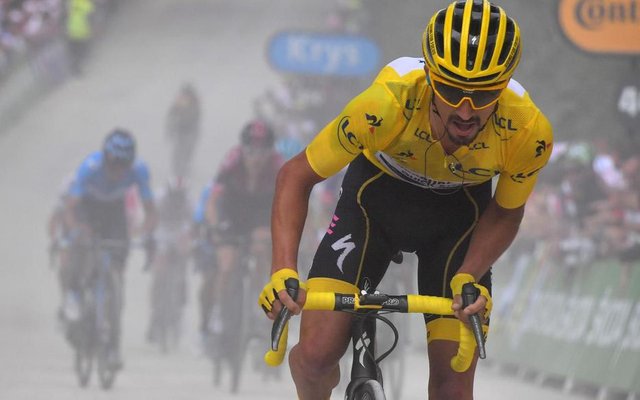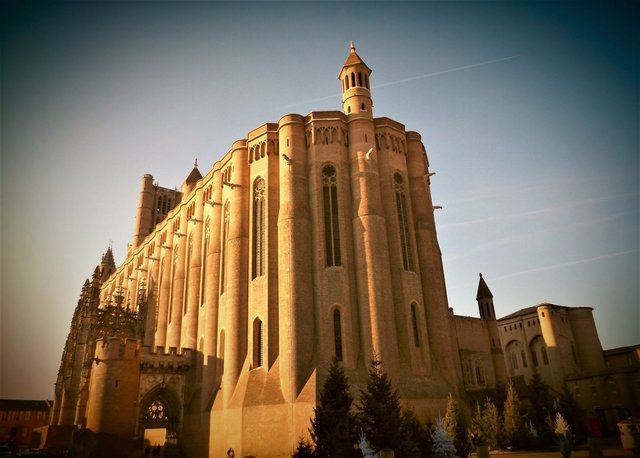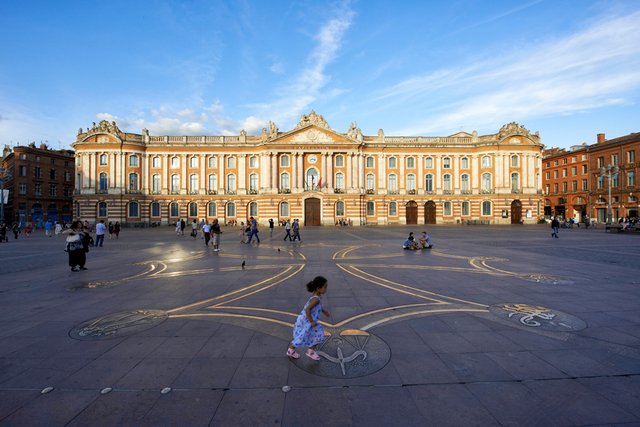
Après une journée de repos, le peloton reprendra sa route en direction des Pyrénées par une visite du Tarn. Les équipiers des sprinteurs devraient être mis à contribution sur ce trajet qu’ils pourront regarder comme une opportunité mais aussi comme un piège. La plus grande application sera de mise pour organiser une arrivée massive à deux pas du Capitole.
After a rest day, the peloton will set off towards the Pyrenees starting by a visit of the Tarn department. The team mates of the sprinters should be put to contribution on this course that they can consider as a fine opportunity or potentially a trap! They’ll need to be extremely focused and powerful to organise a bunched sprint just by the “Capitole” building.
ALBI 
L’intitulé de l’étape invite à se pencher sur l’œuvre du peintre Henri de Toulouse-Lautrec mais c’est bien sur les terres de Lilian Calmejane, lui aussi natif d’Albi, que se jouera le bouquet du jour. En 1985, c’est dans la préfecture du Tarn qu’avait été donné le départ d’une étape du Tour de l’Avenir arrivant à Revel, où un jeune coureur espagnol, Miguel Indurain, attirait l’attention des observateurs. La bonne impression était confirmée cinq jours plus tard sur le contre la montre disputé entre Lourdes et Tarbes.
The title of the stage would tend to invite followers to discover the works of painter Henri de Toulouse-Lautrec, but it’s on the territory of Lilian Calmejane, also a native of Albi that the day’s decision will be made. In 1985, it was in the prefecture of Tarn that a stage of the Tour de l’Avenir took off heading to Revel where a young and promising Spanish rider by the name of Miguel Indurain attracted the attention of many. That good impression would be confirmed five days later on a time-trial held between Lourdes and Tarbes.
TOULOUSE 
La ville rose figurait au programme de la première édition du Tour en 1903. Quelques années plus tard, en 1908, Lucien Petit-Breton s’imposait avant de remporter sa seconde Grande Boucle. Exactement comme Gino Bartali en 1948, au beau milieu de son duel victorieux face au jeune Louison Bobet. Au XXIe siècle, les deux arrivées toulousaines se sont conclues par la victoire d’un échappé, Juan-Antonio Flecha (2003) et du sprinteur le plus titré de l’histoire du Tour, Mark Cavendish (2008).
The pink city was on the program of the first edition of the Tour in 1903. Several years later, in 1908, Lucien Petit-Breton won a stage there before conquering his second Grande Boucle. Exactly like Gino Bartali in 1948, in the middle of his victorious battle with young Louison Bobet. In The 21st century, the two finishes in Toulouse ended up with the victory of a breakaway rider, Juan-Antonio Flecha (2003) and of the sprinter with the most stage wins on the Tour, Mark Cavendish (2008).